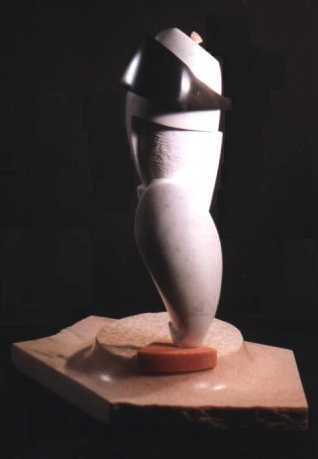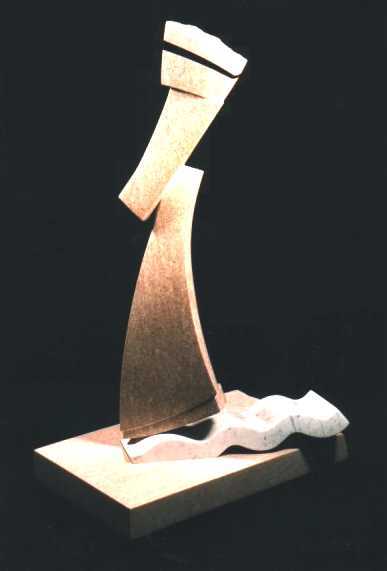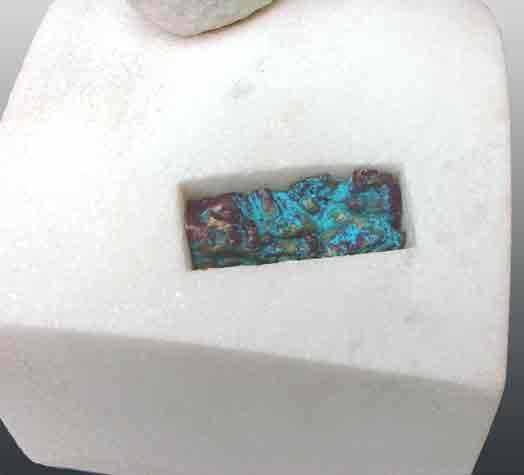
metaphorical presences: personages, structures, objects
The sculptures can all be understood as metaphors for the artist's understanding of the world he sees around him.
During the working process, each sculpture becomes a focus or congruity for intuitive perceptions.
Those perceptions are evoked by the materials and the forms he is working with in the particular piece of sculpture, and by the emotional and intellectual state of the environment he inhabits during the working process.
When finished, the work is defined by the tangibility of the presence it achieves.
The images and feelings it tangibly conveys to the viewer are just as important as the expressed intent of the artist.
While the artist might be able to point out specific features and describe what they refer to, it is how the viewer responds to those elements that creates the emotional presence and gives power to the work.
The character of the artist also cannot help but be revealed by the images and forms he chooses to spend his life and work expressing.

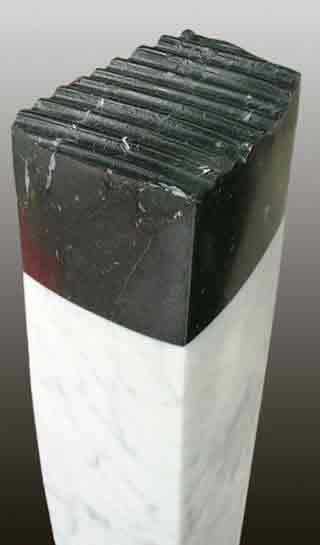
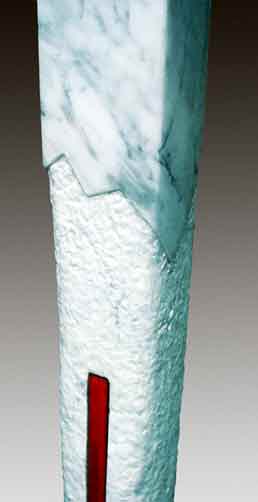
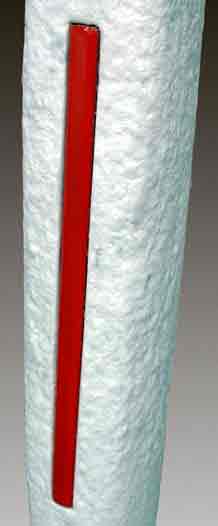
TALL PRINCE: ANOTHER ROUGH DAY
italian, spanish, and brazilian marble, ceramic, bronze
33" x 7" x 5"
This piece is the latest in a series of works that is loosely based on the characteristics of personages in a royal court . . .
such as a King, a Queen, a Princess, a Prince, and a Jester.
above: detail of top in the spanish black
negro marquina marble
right:
detail of texture changes in the italian marble carrara bianco unito
above: detail of glazed ceramic inlay
left:
detail of cast bronze inlay in the
brazilian white marble, showing some of the subtle colorations obtained through a chemical patina
Sometimes subtle, but always well-defined, it is the juxtapositions of form and material that reveal the character I find within each piece.
In this way all of the images can be considered as fragmented portions of an ever-changing self-portrait of the artist along his life's journey.
Each image evokes certain character traits through the various relational treatments of the forms and the materials used within the work. Often these characterizations refer to archetypal figures from the cultures that have nourished the artist, though sometimes the images well up from the primal depths of the individual's psyche.
 | ||||
home / about the artist / stoneboat series / lipwork series / metaphorical presences / landscapes / multi-element installation pieces / recent works
technical processes / thumbnail galleries / Cortona foundry / Finland stone carving / recommended reading / all in the family / links page
Don Dougan - sculptor
www.dondougan.com
